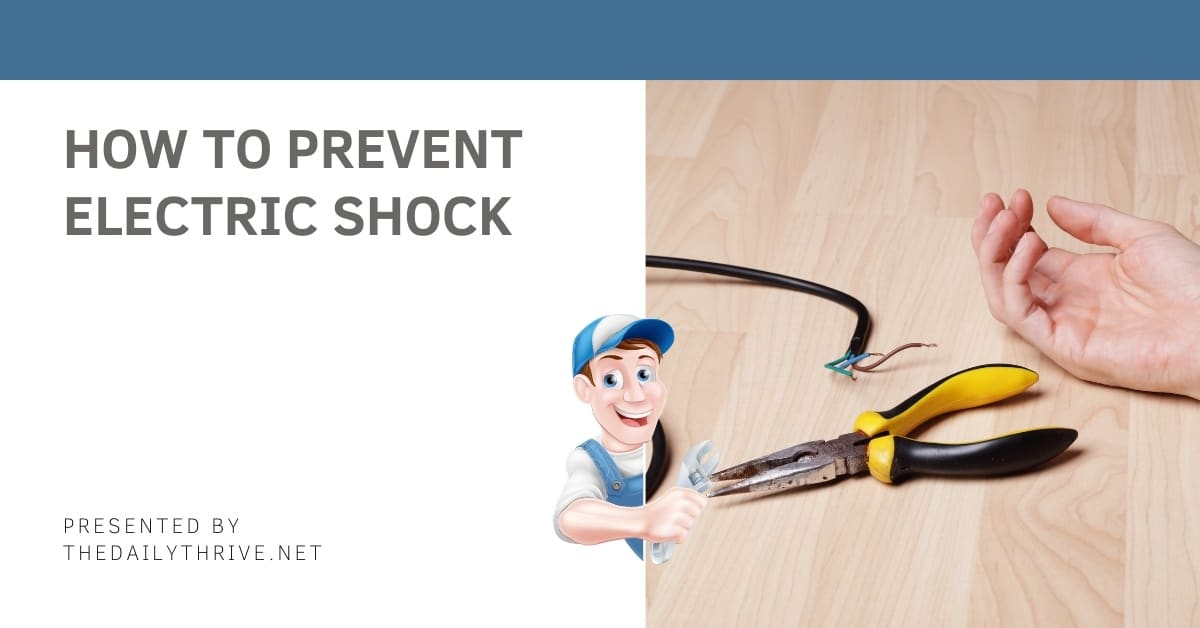Working with electricity requires skill and a heightened awareness of safety. Electric shock, a serious risk in any electrical project, can be prevented with the right knowledge and precautions. This guide provides essential tips on how to avoid electric shock while working on electrical systems in your home or office.
Despite expecting perfect electrical installations in homes, reality often presents a different scenario. Wiring might not always be as logically organized as one would hope. For example, a circuit labeled as “bathroom” could be connected to a different power line than anticipated.
Understanding the complexity of home wiring systems is the first step in electric shock prevention.
Learning the Basics of Electricity
A fundamental understanding of how electricity works is crucial to effectively prevent electric shocks. Electricity, a form of energy, always seeks the path of least resistance towards the earth or ground. This flow is facilitated through conductors – materials that allow electric current to pass through them.
Different materials have varying abilities to conduct electricity. For instance, compounds like wood and glass are poor conductors, while seawater and many metals are excellent conductors.
The human body can conduct electricity primarily due to our tissues’ sodium and water content. Electric shock occurs when this natural conductivity allows electricity to flow through the body.
How Electric Shocks Happen?
The most common cause of electric shock is direct contact with an exposed electrical source. This could be a live wire, a damaged appliance, or any energized conductor.
Electricity can also reach a person indirectly through other conductors. This might happen when someone is standing in water that becomes electrified or touches a conductive object like a metal pole in contact with an electrical source.
Engaging with various educational resources to deepen your understanding of electricity and electric shock. Read books, articles, and blogs, and explore reliable websites on electricity and safety.
For a more practical perspective, consider speaking with a professional electrician. These experts can provide real-world insights into how electricity behaves and the best practices for working safely around electrical systems.
Knowing the fundamentals of electricity and its behavior is more than just technical knowledge; it’s a key part of your safety toolkit. By understanding what makes a good conductor, how the human body fits into this picture, and the common scenarios leading to electric shocks, you can take more informed and effective steps to prevent them.
Here are some more comprehensive strategies to ensure the safety of you, your family, and your home from electrical hazards.
1. Assessing Power Circuits
Turning off a circuit breaker doesn’t necessarily mean that all power in that area is off. Lights going out might indicate only a partial disconnection of power, as sockets might be on a different circuit. The wiring may not be as straightforward as expected, especially in buildings with later extensions or modifications.
2. Using a Socket Tester

After flipping the breaker, use a socket tester to confirm that the power is indeed off. If you’re working on a faulty socket, a meter can be used to test the lines directly. Ensure the meter is capable of handling the electrical load to avoid damage.
3. Effective Circuit Labeling
Properly labeling your breaker circuits is crucial for safety and efficiency. As you discover the true power sources, label them clearly and accurately. Use durable materials like sticky labels for longevity, as pencil marks can fade over time.
4. Locating the Master Switch
A well-installed electrical system should have a master switch that cuts off all power in the building. This switch might be located in places like the attic or basement, separate from the breaker box. Flipping this switch ensures a complete shutdown of power, providing a safe environment for electrical work.
5. Safety Precautions for Electrical Work
- Never Assume Power is Off: Always verify that the power is completely disconnected before starting any electrical repairs. Assuming power is off without checking can be dangerous.
- Understand Your Electrical Layout: If you didn’t install the electrical system yourself, it’s vital to understand the wiring layout to avoid surprises.
- Respect the Power of Electricity: Beyond powering devices, electricity has the potential to cause serious harm. Treating it with respect and caution is key.
Preventing electric shock is a critical aspect of safely working with electricity. You can significantly reduce the risk of electric shock by understanding your home’s wiring, using the right tools, properly labeling circuits, and ensuring complete power disconnection. Always approach electrical work with caution and prioritize safety above all. Don’t hesitate to consult a professional electrician if you’re ever in doubt about your electrical system or the safety procedures.

